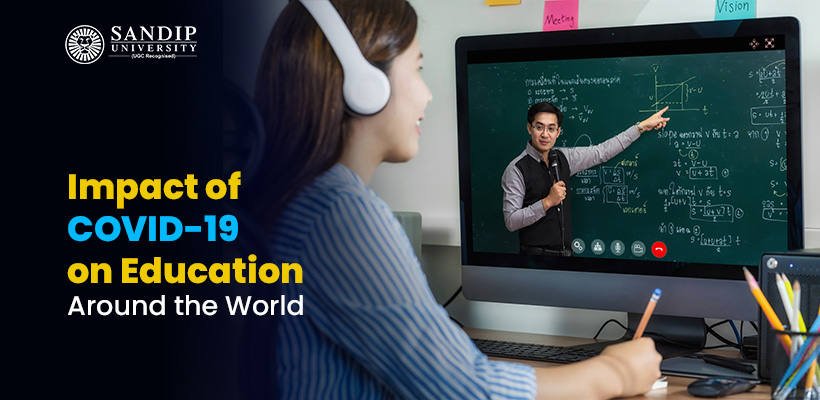COVID-19 has significantly impacted educational institutions worldwide. Overnight, students and teachers shifted from classroom sessions to virtual sessions. It was a truly challenging time for teachers as well as learners as the medium of education changed drastically.
Even some of the top engineering colleges in Maharashtra had to conduct classes virtually, which was challenging as engineering is a very practical field. Let us take a close look at the ways in which educational institutions were impacted due to COVID-19. Here are some key ways it affected them:
1. Shift to Remote Learning: Many schools and universities had to quickly transition to online learning to ensure continuity in education. This shift brought challenges related to technology access, internet connectivity, and adapting teaching methods to an online format.
2. Disruption of Academic Calendar: The pandemic disrupted traditional academic calendars, leading to postponed exams, altered school terms, and changes in graduation schedules. This caused uncertainty and adjustments for students, teachers, and administrators.
3. Learning Inequality: Not all students have equal access to technology or a conducive environment for learning from home. This led to increased educational disparities, with some students falling behind due to lack of resources or support.
4. Mental Health Impact: The pandemic’s stressors, including isolation, fear, and uncertainty, have affected the mental health of students and educators. Educational institutions have had to focus on providing mental health support to cope with these challenges.
5. Financial Strain: Many institutions faced financial challenges due to decreased enrolment, reduced funding, and increased expenses for technology and safety measures. This strain has led to budget cuts, staff layoffs, and program reductions.
6. Adaptation of Teaching Methods: Educators had to adapt their teaching methods to engage students effectively in an online environment. This required training and support for teachers to navigate new technologies and pedagogical approaches.
7. Health and Safety Measures: Educational institutions had to implement strict health and safety measures, including social distancing, mask mandates, regular testing, and vaccination requirements to ensure a safe learning environment.
8. Changes in Assessment Methods: Traditional assessment methods such as exams and tests had to be modified to suit online learning. Institutions explored alternative assessment strategies to fairly evaluate student performance.
9. Research and Academic Projects: The pandemic disrupted research projects, academic conferences, and collaborations due to travel restrictions and limited access to laboratories and resources.
10. Long-Term Impact on Education: COVID-19 forced the education sector to innovate and adopt new technologies and teaching methodologies. Some changes, such as increased use of online resources and hybrid learning models, might persist even after the pandemic.
Overall, the pandemic has profoundly reshaped the landscape of education, highlighting both the resilience and vulnerabilities of educational institutions while prompting the adoption of new approaches and technologies. Many top private universities in India adapted to this change and created newer and better ways of teaching and learning. This was truly a revolutionary time for educational institutions around the world.

